Variants of using expanded clay in the country
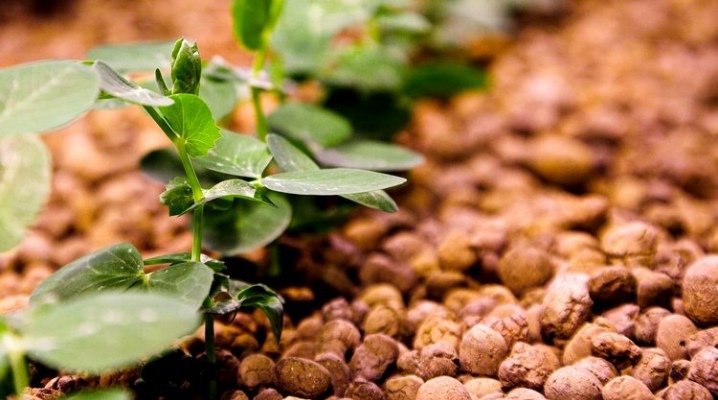
Not many owners of suburban summer cottages know about expanded clay. The basis for its creation is clay or shale, which undergo high heat treatment in the form of firing. The finished product is round-shaped pebbles. The low cost makes the use of expanded clay in the country very popular in landscape design, construction and plant growing.
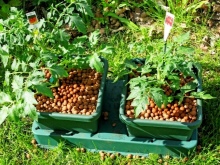

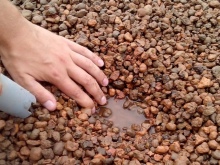
Use for tracks
Expanded clay itself is a very fragile material. If you just pour it on the paths at the summer cottage, then it will collapse under constant mechanical stress after a while, will crumble and become like clay sand.


Expanded clay has practically no weight, and in windy weather its particles can scatter throughout the territory of the summer cottage. All of the listed individual features of expanded clay must be taken into account when using it to equip summer cottages.
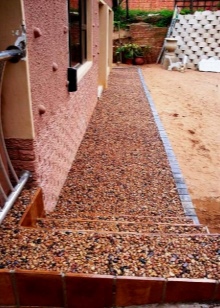


To avoid unpleasant consequences, it is necessary to properly prepare expanded clay. To do this, you need to mix it with sand and cement. This method of application turns the resulting composition into a homogeneous monolith - expanded clay concrete. It is very durable and does not spoil the appearance of the site.
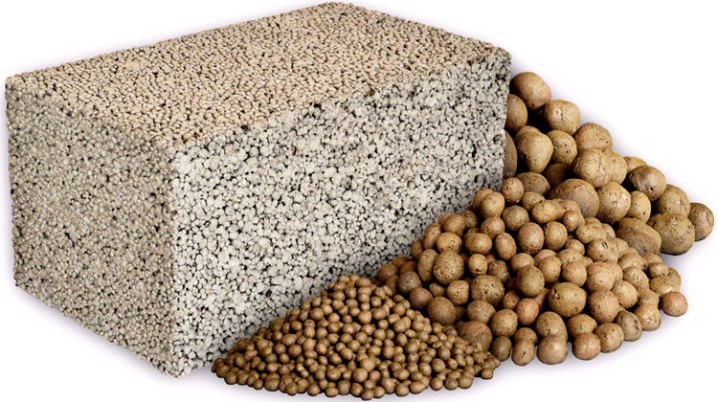
Before you prepare the material for work, and start laying the tracks, you need to perform a number of activities.
-
Carry out the planning of paths along the site using pegs and twine.
-
Remove the top layers of soil. Sand, gravel or crushed stone will need to be poured into this depression - they will serve as a drainage layer. This is especially important if the soil in the area is marshy.
-
Compaction of the earth and laying of geotextile fibers.
-
After that, you need to make the side formwork. The choice of material for them depends on a pre-thought out design. If you plan to make rounded paths, then it is best to use metal sheets, flexible plastic or plywood to install the formwork. They are fastened with rods made of wood or iron.
-
Fill the drainage layer into the dug hole.
-
Then the reinforcement layer should be installed using pipes, wire or an old mesh-netting.
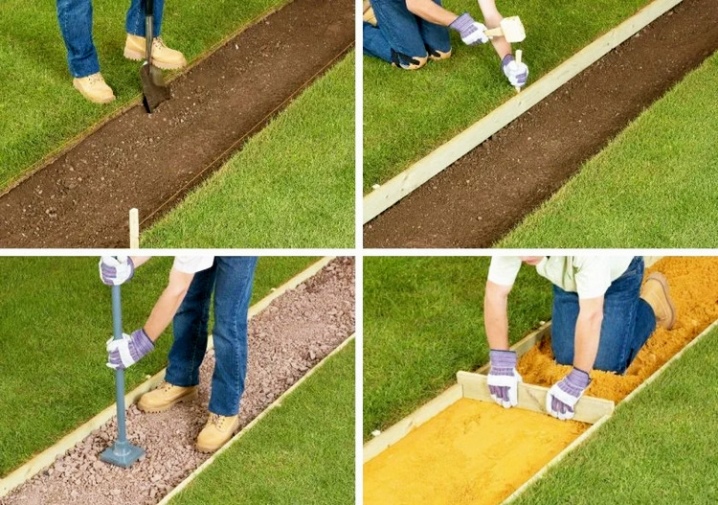
Only then can you start making the base - expanded clay concrete - and start pouring it into the prepared place.
For the manufacture of expanded clay concrete, the following components are required in the following proportions:
-
8 parts of expanded clay (density 400 kg per m3);
-
1 part of cement grade M400;
-
2 pieces of sand;
-
1.5 parts of water.
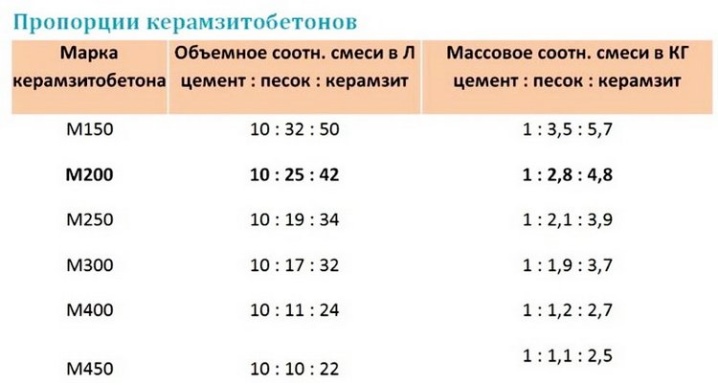
Expanded clay must be poured into a concrete mixer and filled with water. Then you need to wait 10-15 minutes for the material to absorb water. When the liquid becomes 2 times less, you can add all the remaining components and start mixing. The duration of this procedure is 5-10 minutes, the result should be a thick mixture with pieces of expanded clay.
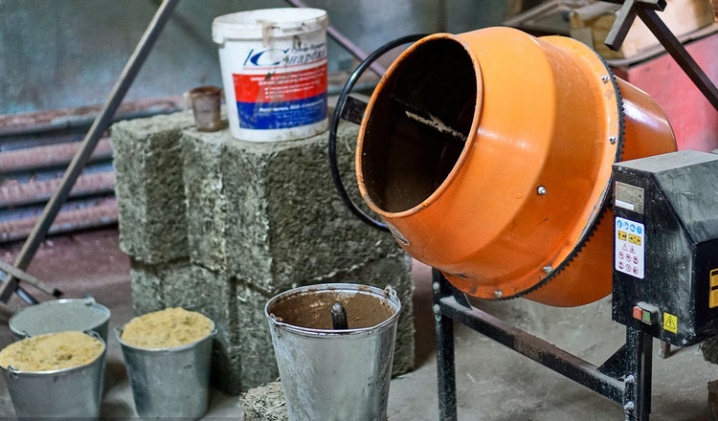
Very important! If the weather is very dry and warm, the path filled with expanded clay concrete should be covered. This must be done so that the evaporation of moisture occurs more slowly. Otherwise, cracks may form on the surface, which cannot be removed.
Making country paths from expanded clay is quite an interesting activity, because it allows you to create original and stylish elements of the site. Various shapes (straight or rounded) and surface textures allow any interesting design to come true.And if you add pigment dye to the mixture, you can get a bright and beautiful track.
In the manufacture of paths, expanded clay can also be used as a drainage layer. Paving stones or tiles are laid on it. This is especially in demand in areas where the soil is swampy, and underground waters are located near the surface.
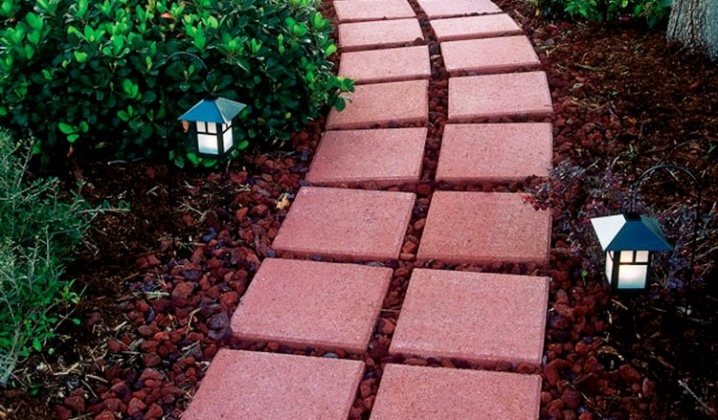
The width of the expanded clay drainage layer depends on how moist the soil is in a given place. The more water, the wider the layer should be. Geotextiles are laid at the bottom of the recess. It does not allow the soil and expanded clay granules to interact and creates an additional barrier for the germination of weeds. It is on this fabric that the drainage is laid out. To seal this structure, you can put a metal mesh or a mixture of sand and cement on it, and only then lay out a beautiful pattern using tiles.
How to make flower beds?
Expanded clay also performs decorative functions in flower beds.
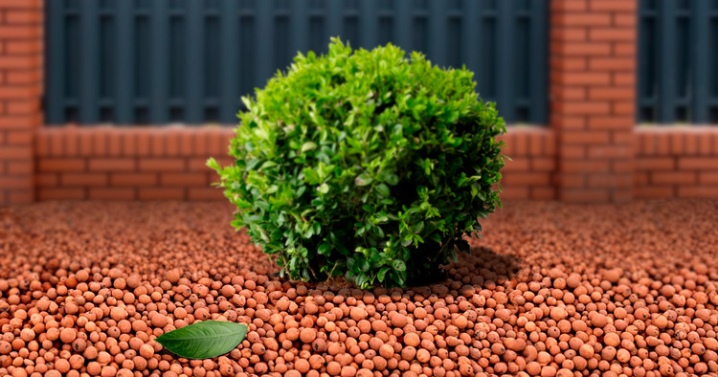
It attracts guests and passers-by, improves the appearance of the site. With the help of this material, empty space in the flower beds is filled. The addition of a colorant allows for a perfect color that will not wash off over time. The variety of colors allows you to experiment and achieve various decorative effects, creating your own unique style.
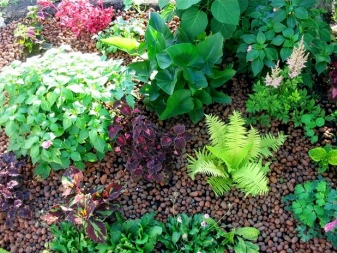
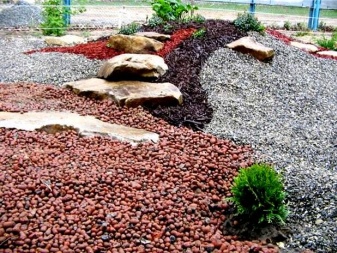
What else is the material for?
Expanded clay is used not only when you need to decorate a flower bed or arrange paths in the garden. It is a great way to create the best growing conditions for plants. You can improve the quality of the crop and accelerate the growth of vegetables and other crops if you make a drainage system using expanded clay.
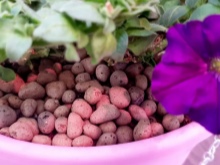

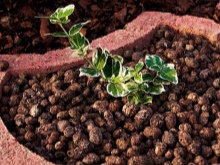
It allows air to enter the ground and performs protective functions, as well as protects plants from drying out and the formation of mold. Summer residents note that such a drainage system for the garden reduces the number of diseases of any crops, scaring away pests from them.
In horticulture, expanded clay is also used as drainage for various fruit trees and shrubs. Expanded clay perfectly mulches the ground and prevents weeds from growing.
It is recommended to scatter it under the heat-loving cultures of summer cottages, because in this way you can protect them from severe frosts.

For more information on the use of expanded clay in the country, see the video below.













The comment was sent successfully.